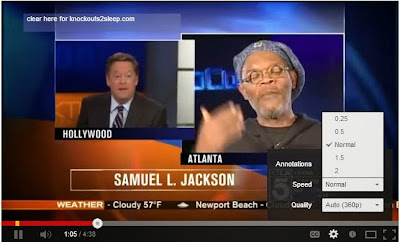A number of studies show that high-class individuals are more prone to unethical behavior and that they are conditioned by greed .
The driver of a high end car is probably more dishonest than driving a utility .
All we had already suspected , but now when a number of studies have shown : the upper class is more prone to dishonest behavior .
This is something that almost realized at the time Paul Feldman. Feldman decided one day ( in the eighties ) leaving office analyst spending U.S. Navy to engage in the sale of donuts. Instead of using vending machines are dedicated to deliver trays of donuts along with a kind of piggy bank for various offices.
The idea was that people willingly and honestly deposit the cost of eating in the bank. The profit margin allowed a small margin of fraud that ultimately if it was not high posibilitaba keep the business (it was in the U.S. and no other country).
Wearing an exquisite accounting measure honesty that allowed organizations or even the country ( according to this measure the U.S. is honored by 87 % ) as a function of various parameters . Fraud depended , among other things, the holidays near , especially those with certain amount of stress.
Also the number of employees ( headcount greater higher percentage of fraud). But the funny thing is that fraud was inversely proportional to the income of their customers. Employees deceived unless their bosses.
Thus, in a plant where mainly executives had the degree of deception (donuts stolen) was much higher than that of the plant of the employees of the same company. Feldman attributed this behavior to the executives had excessively developed a sense of their privileges, but most likely it was precisely the be dishonest which led them precisely where they were.
Well, if the data vendor donuts seem lax , maybe we convince more "serious " investigation . Now, researchers at the University of Berkeley show that the honesty of the upper classes is rather scarce and do through no less than seven different studies. It's worth reading to the end to get a better idea of the human condition when it comes to upper classes. We may clarify many things.
According to Paul Piff dishonest increasing trends in upper class individuals is controlled in part by a favorable attitude toward greed . The research that has been done by his colleagues on the relationship between socio- economic class , antisocial or prosocial emotions and behaviors reveals new information about the differences of social class during these times of economic stress increases .
It sheds light on the role of inequality in shaping patterns of ethical conduct and selfish behavior, as well as indicating ways in which these patterns can be changed.
To investigate the ethical conduct of the upper class researchers made a first study in which the ethical track trends over 1000 individuals of low, medium and high class became .
These volunteers reported their social class using the MacArthur scale and filled in a survey that asked about their attitudes about unprincipled behavior and greed. They also participated in a task designed to measure your actual dishonest behavior .
In two field studies found that high-class motorists were 4-3 times more likely to perform maneuvers at the expense of the safety of other drivers and pedestrians. For example high-end vehicles ( with a supposed high class person driving ) gave way to pedestrians on fewer occasions than economy cars ( see video).
The reader may be familiar with this type behavior in their country by drivers of high-end ( would be interesting to do a similar study to test the influence of sociocultural country).
Another study found that upper-class participants who were presented with a scenario where there was a miss unscrupulous behavior were more likely than individuals of other classes to respond with the same kind of behavior.
In the fourth study, participants were asked individuals to perform certain tasks in a laboratory where there was a jar of sweets for children's visits. The upper class " had " twice the goodies that of the other classes .
In the fifth study, participants were assigned the role of an employer who had to negotiate a wage with a candidate for future work seeking a long-term employment . Among other things they were told that the job would be eliminated early and they were free to transmit this information to the candidate. The upper-class individuals were more likely to not report on this point candidates .
In the sixth study participants took part in a computerized dice game in which each player could throw the dice five times and report the results. The player with the highest score received a cash prize . The players did not know that the game was rigged and that no player could get more than 12 points for the five runs.
Well, again, upper class participants were more likely to say they had received a much higher score than those 12 points , indicating a high rate of fraud.
In the latest study found that greedy attitudes were the most significant predictor of dishonest behavior . Participants were prepared to think about the advantages of greed and then were presented with scenarios about bad behavior in the workplace , such as stealing money or accepting a bribe overcharging a client.
It turned out that participants who did not even belong to the upper class were willing to embrace behaviors of the upper class if they are conditioned or prepared on the benefits of greed.
According Piff , these findings have clear implications for how increased wealth and status in society make dishonest behavior patterns , and suggests that different social values about what you have or do not have help drive these trends .
A model that considers cooperation as emergent property , suggests that under certain conditions, the dishonest behavior of some individuals can improve society.
Can we believe that moral laws are imposed by divine design or think that if a fact be a natural product of socio- biological evolution and that can be studied scientifically. After all, a company formed by an intelligent species that do not develop minimum standards of behavior is doomed to failure and demise.
Not so long ago we published on this website an article about two recent results on how to sustain cooperation in human societies and prevent proliferation of exploited people. Although two experimental cases was also mentioned in passing computer simulation models .
Well, if we're going to see now is just one of these computational models is based on Statistical Physics and rationality .
The big question is how the ethics or morality appear in a world where everyone just look for yourself . The results of this model the answer lies in how people interact with their nearest neighbors rather than in society as a whole.
The study was led by Dirk Helbing of ETH Zurich , and further suggests that , under certain conditions, the dishonest behavior of some individuals can improve society.
A common good such as natural resources or social benefits are often exhausted because the interest of each individual ignores the whole world or society.
Cooperative behavior can be forced by punishment , but requires time and effort from the others and it may no longer apply the corrective . Without corrective or opportunistic profiteers can to roam the detriment of everyone else and eventually deplete the common resource.
The question , again , is how cooperation appears . We have already seen how this website have been proposed indirect reciprocity , reputation , punishment or reward mechanisms that ensure the maintenance of cooperation. However, according to Helbing 's group , none of this is necessary for cooperation to flourish.
In reaching this conclusion, the researchers focused on the idea that individuals behave in a rational way based on how they do their neighbors , rather than how it does the entire population ( the latter possibility requires some good channels communication that allow punishment agreements , which need not be present ) .
This is where the ideas of statistical physics appear . Thus, the magnetism in the Ising model depends on the behavior of the spins and how they interact with the nearest neighbors , an idea that is often more realistic than the mean field approximations . Thus arises the macroscopic magnetic field of this interaction locally.
Other typical examples are schools of fish or flocks of birds, individuals whose only acting under fixed rules depending on what the neighbors. Thus an emergent property that was not present in the individual units appears . Social morality , according to this model would be an emergent property , an idea that is lost in other approaches to the problem.
The model is based on the theory of games and wins on a square lattice of points representing 10,000 individuals. Every individual can take one of four ( or states) possible strategies: cooperate without punishing freeloaders ( cooperative individuals ) , cooperate and punish ( moralistic individuals) be an advantage or be an opportunist and still punish others exploited ( hypocrites individuals ) or simply be an opportunist. Initially the four strategies are distributed randomly on the network and the system is allowed to evolve to see what long-term behavior prevails or you reach a stable situation.
The evolution of the system is influenced on three variables : the fines that penalize opportunistic , the cost of the administration of corrective and a " synergy factor " which provides improved much is the sum of the individual contributions to collective action.
The program chooses a random guy and calculates how much you can earn in relation to its four nearest neighbors given the strategies employed by each neighbor. This is then repeated for other neighbors repeatedly . The strategy employed by each individual is then modified in light of the success or failure of its neighbors , thus individuals can imitate those who do better than them.
After running the simulation for 10 million iterations under different parameters intriguing results were achieved. As expected , if the fine / cost and " synergy factor " reason were low then eventually all became selfish individuals exploited , as were most moralists if those values were high enough.
However, it also found that most moralists could be even if the cost of administering punishment was high. This was because the process of imitation of the most overlooked benefits obtained soon led to aggregates or domains in which there were cooperative and moralistic in a sea of opportunists. As moralists better utilized the cooperative at the end ended up dominating the system faced.
Perhaps most fascinating is a partnership between moralists and hypocrites were also found , as the hypocrites could coexist at the expense of both cooperative and exploited . This occurred when the cost of punishment is high, moderately high fines and synergy not particularly high . According to the authors this scenario is supported by the existence of hypocrites in the real world (although they call them "immoral ").
According to one researcher , the contribution of Statistical Physics this field may be the realization that a large number of players can result in a collective behavior that can not be obtained from the analysis of two-player games . Thus , computational models can be considered pre - experiments to help design sophisticated laboratory experiments.
The team is building a laboratory in which experiments possible game theory with 36 people , and enable them to verify the model predictions .
Herbert Gintis , Santa Fe Institute , and not involved in the study , believes the inclusion of these short-range interactions are important, but also should consider the genetic relationships of the people, because their behavior depends on whether you are trying or not a close relative.
The upside is that this model predicts that the fraction of individuals cooperating is greater than linear models , where the common good is proportional to the fraction of cooperating within the group.
Perhaps this explains why , despite everything , there are individuals who help others .

























